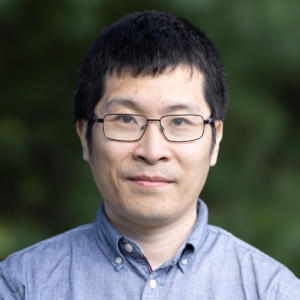Optical fiber cables, initially designed for telecommunications, are increasingly repurposed for environmental monitoring using distributed fiber sensing technologies [1,2]. Distributed acoustic sensing (DAS) based on phase optical time domain reflectometry (?-OTDR) of Rayleigh backscatter enables various applications including traffic monitoring [3], railway [4] and perimeter intrusion detection [5] and cable damage detection [6], etc. The sensing range of DAS is typically limited to several tens of kilometers due to low optical signal-to-noise (OSNR) of the received backscatter. Additionally, compatibility of DAS with existing fiber infrastructure is hindered by the unidirectional operation of inline amplifiers with isolators. An alternative approach based on forward transmission was recently proposed [7, 8], which involves probing an optical fiber with a continuous wave (CW) signal and measuring either changes in received phase or the state of polarization (SOP) to detect cumulative vibration-induced strain. Unlike backscatter measurement, forward transmissions methods have longer sensing range due to higher OSNR, and is compatible with existing telecom infrastructure. However, potential challenges include limited localization accuracy, and low number of simultaneous events that can be discriminated and localized [7]. In this paper, we propose a new concept of hybrid fiber sensing for long-haul DWDM networks where the repeater node architecture combines DAS with forward-phase sensing (FPS), enhancing sensitivity by 32%. This approach achieves a multi-span, fine-resolution fiber sensing system. The FPS method detects vibration anomalies and coarsely localizes its position to within a fiber span. A segmented DAS then refines the position estimate and provides a precise waveform measurement. Consequently, the special resolution improves from one fiber span of 80 km to 4 m. Our scheme is validated on a test bed comprising lab spools and field fibers, demonstrating the capability to detect and monitor field construction while simultaneously supporting full C-band 400-Gb/s real-time (RT) data transmission.


